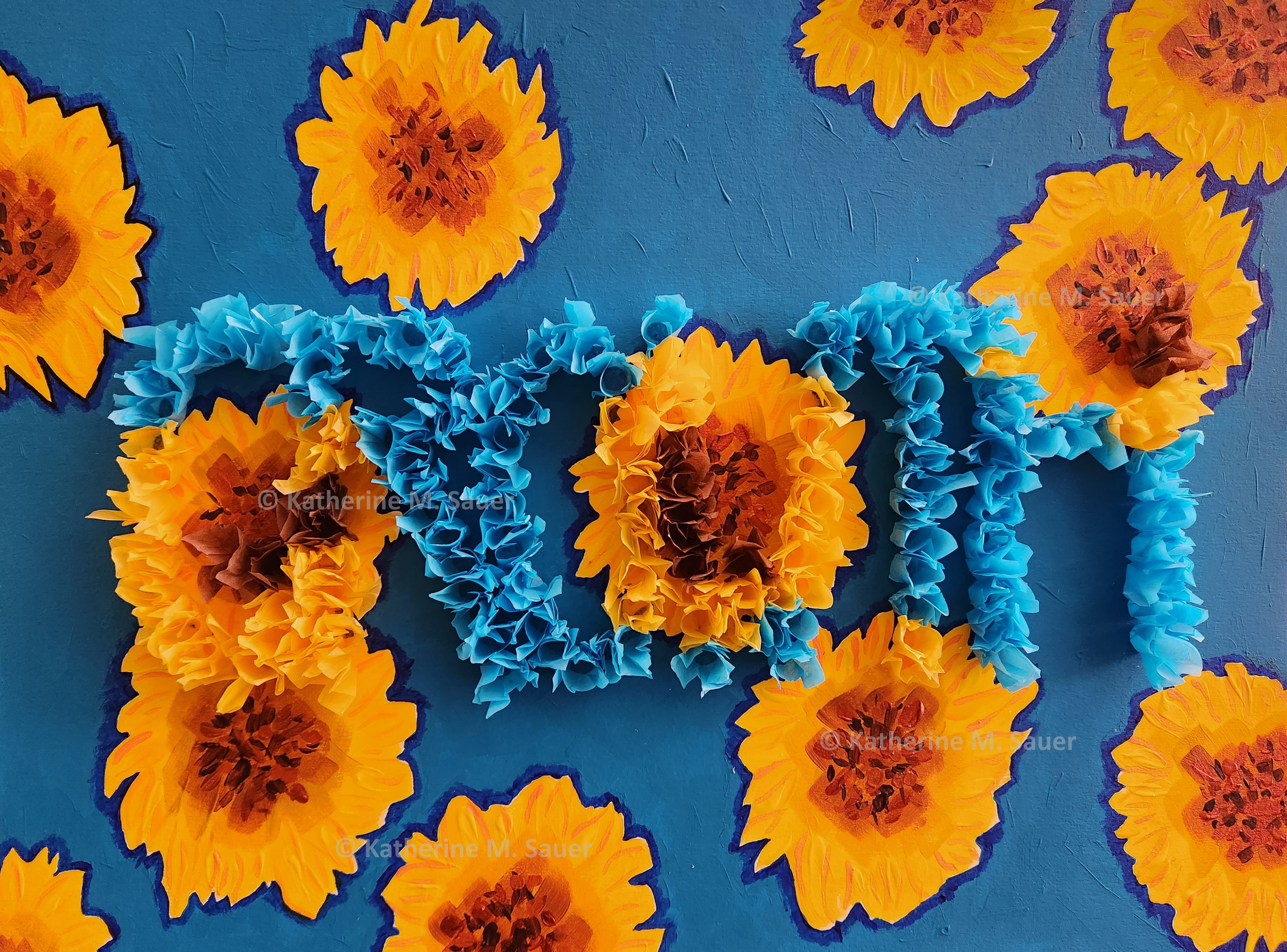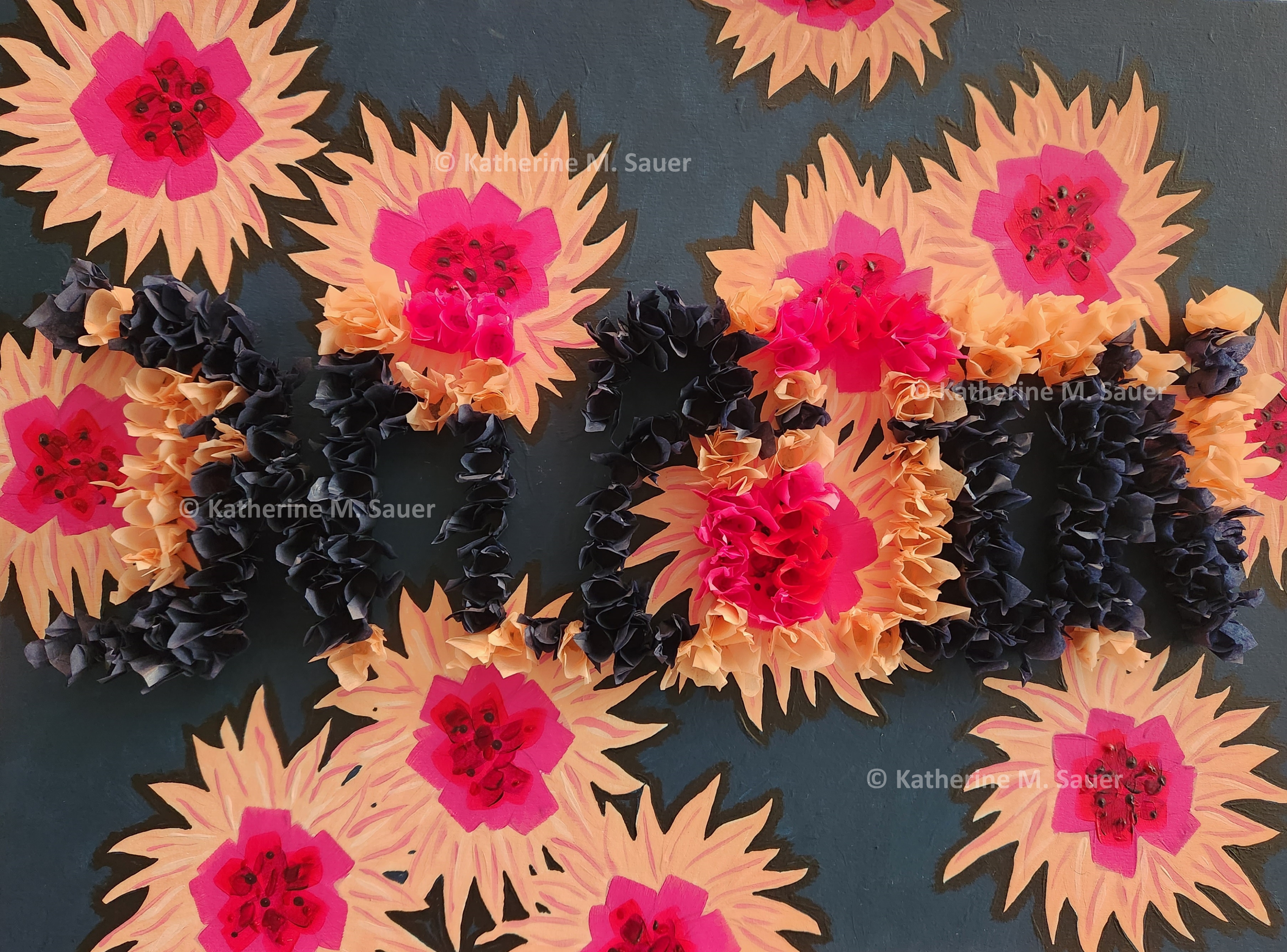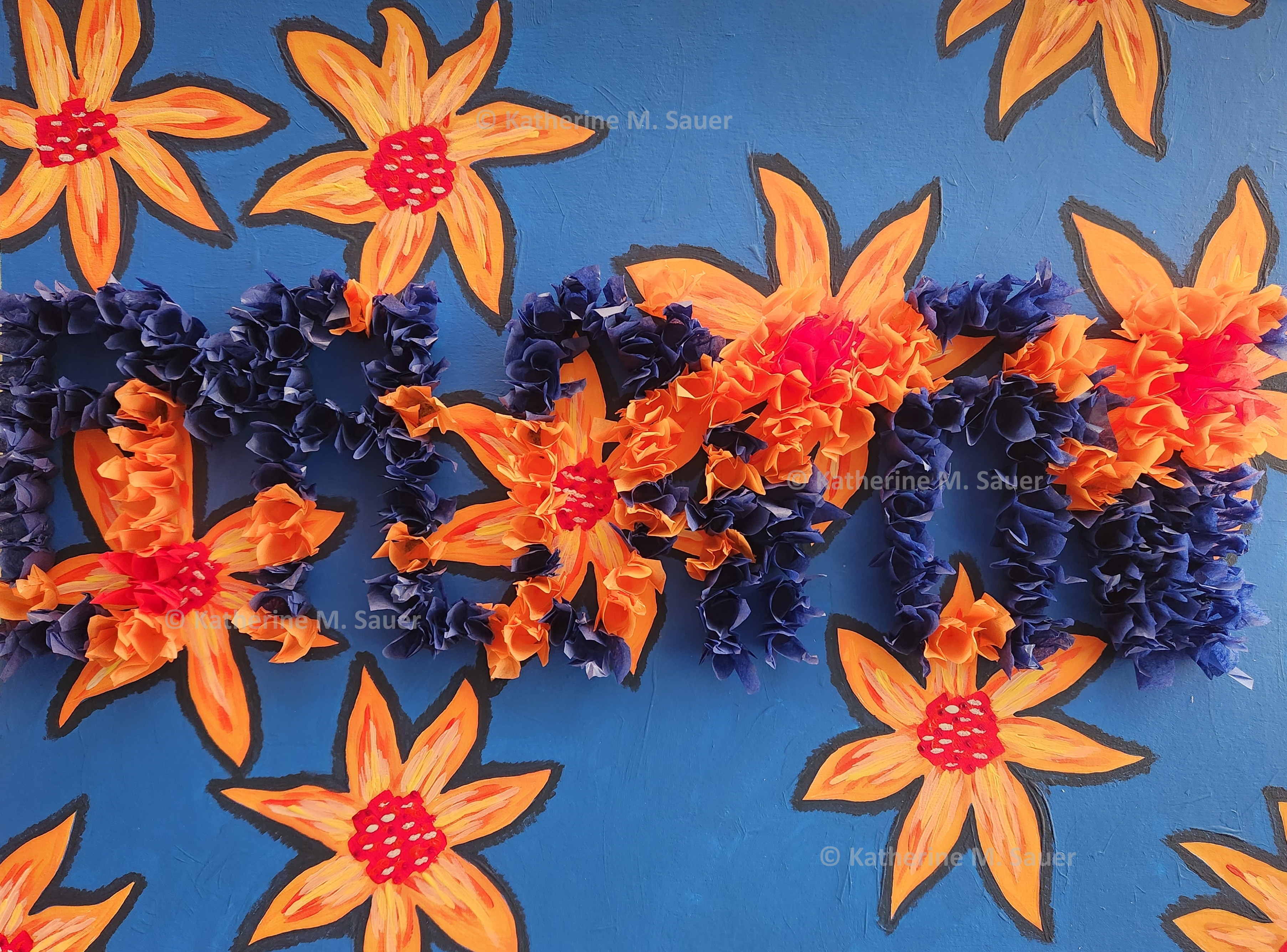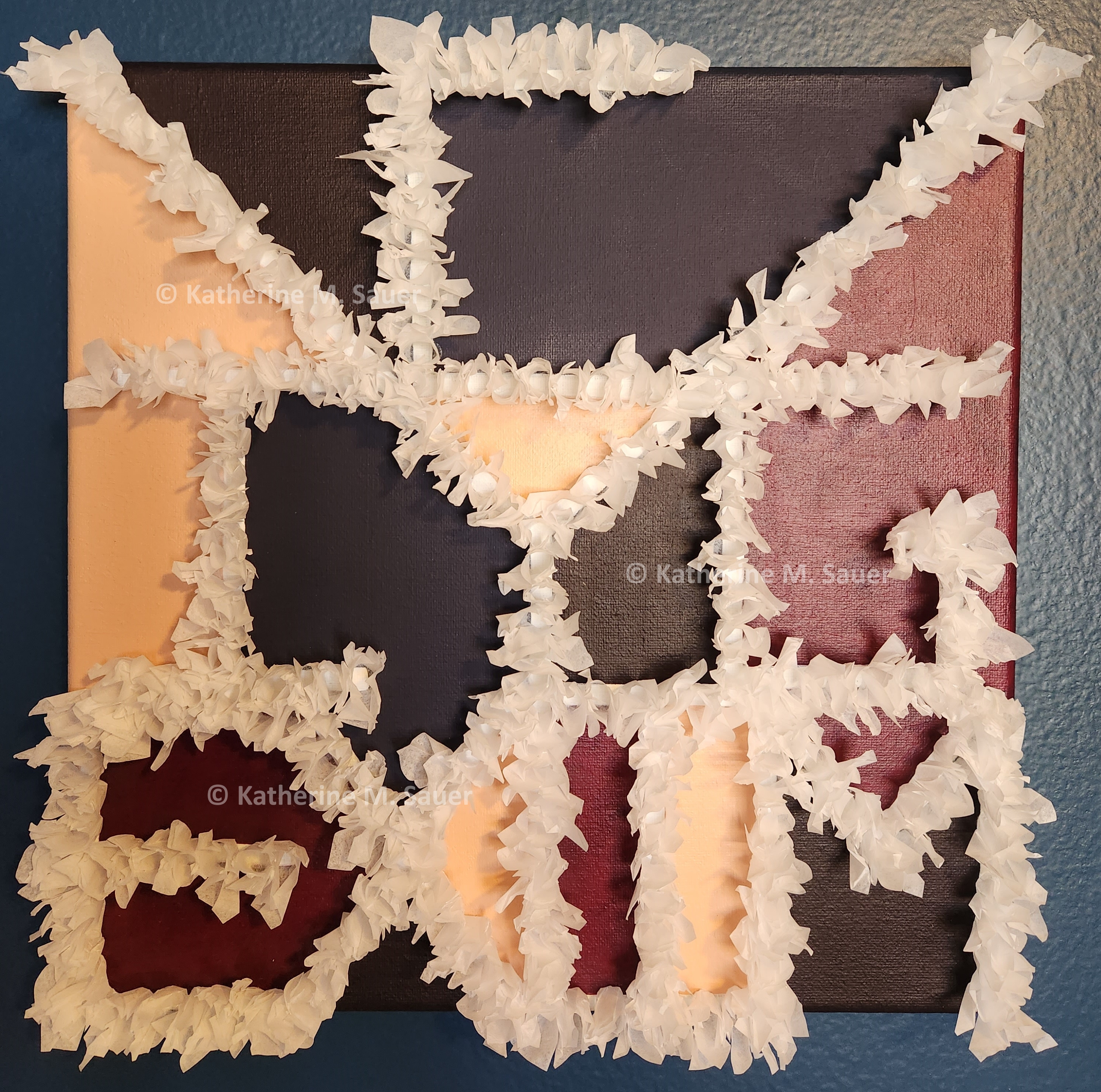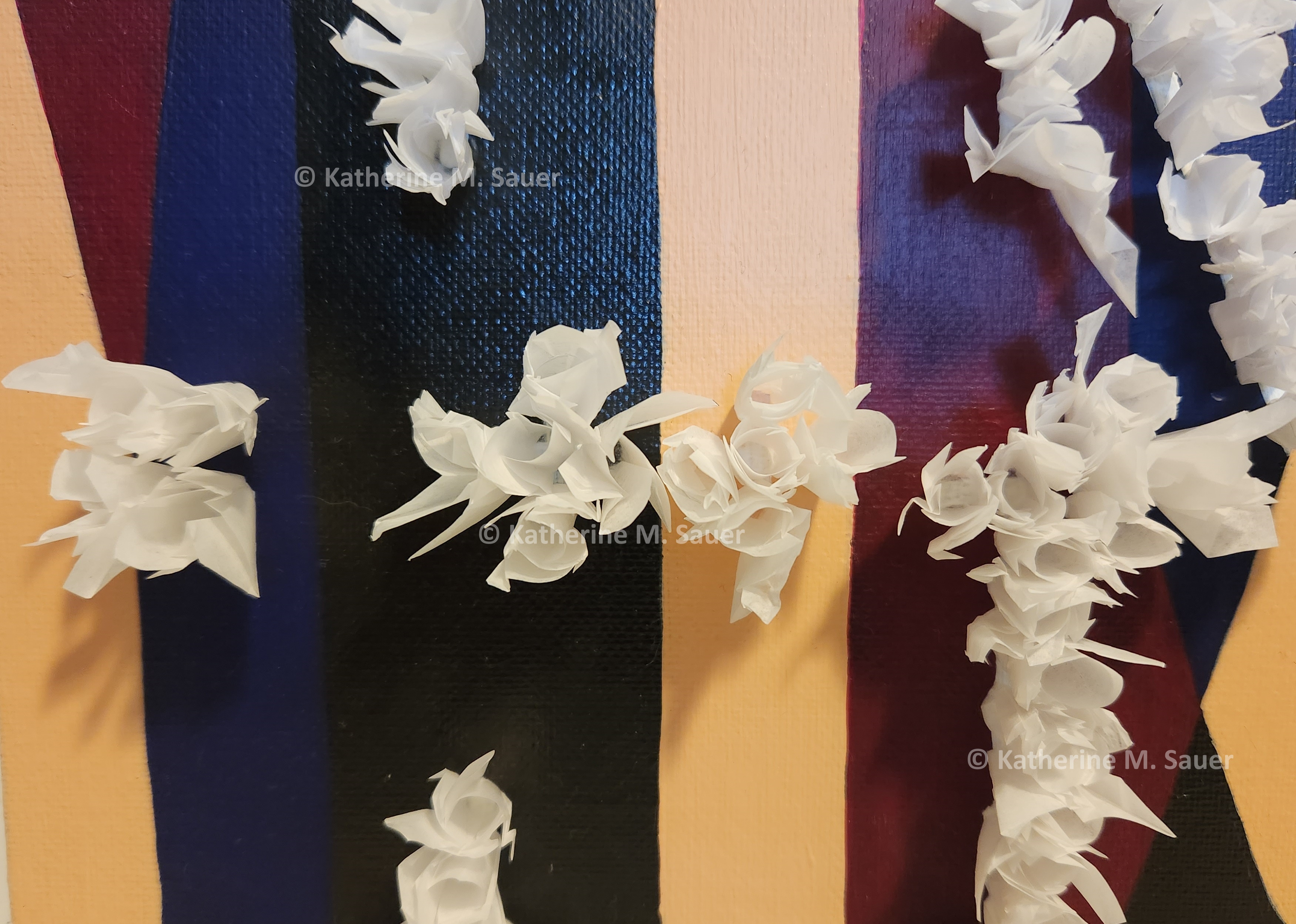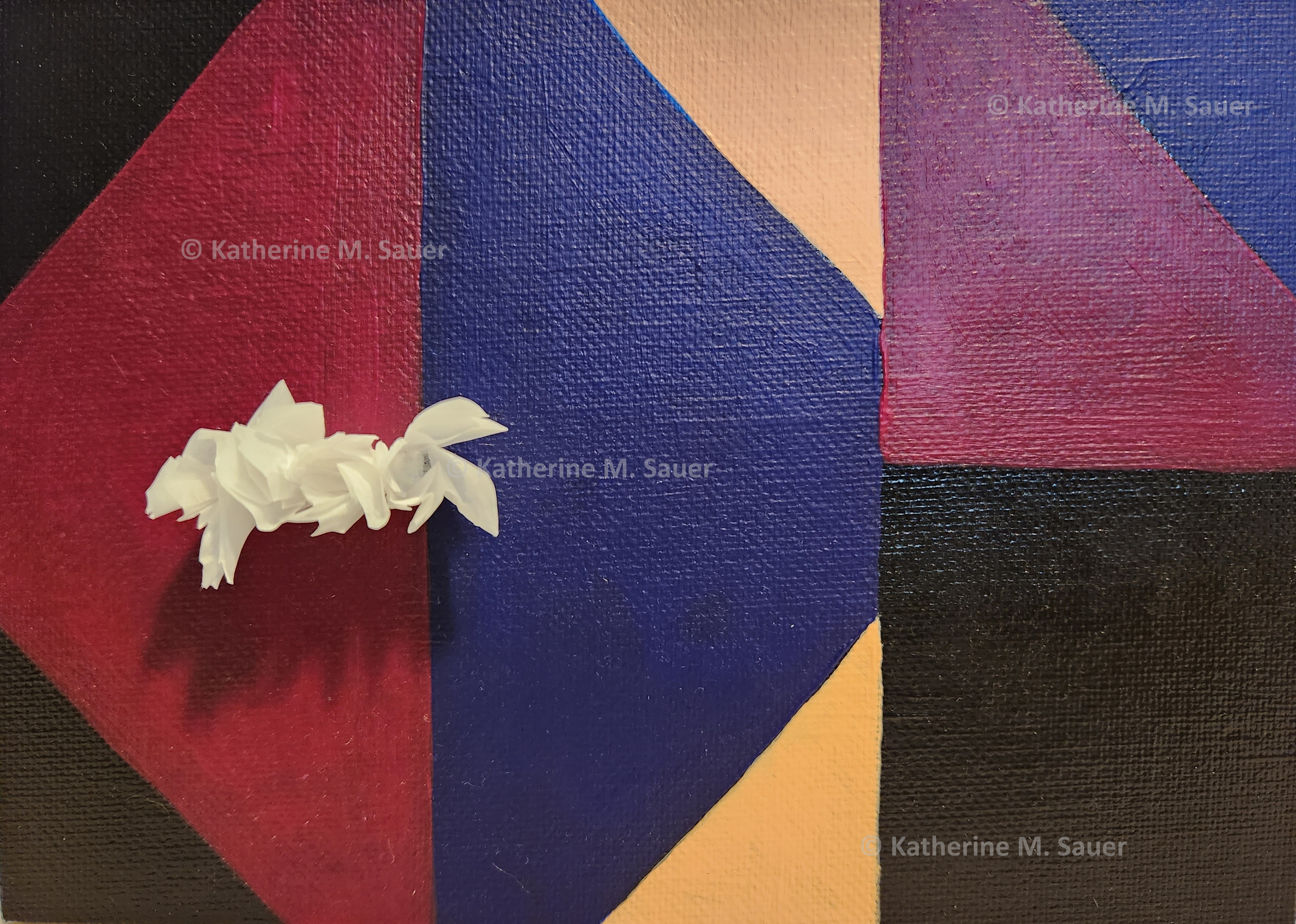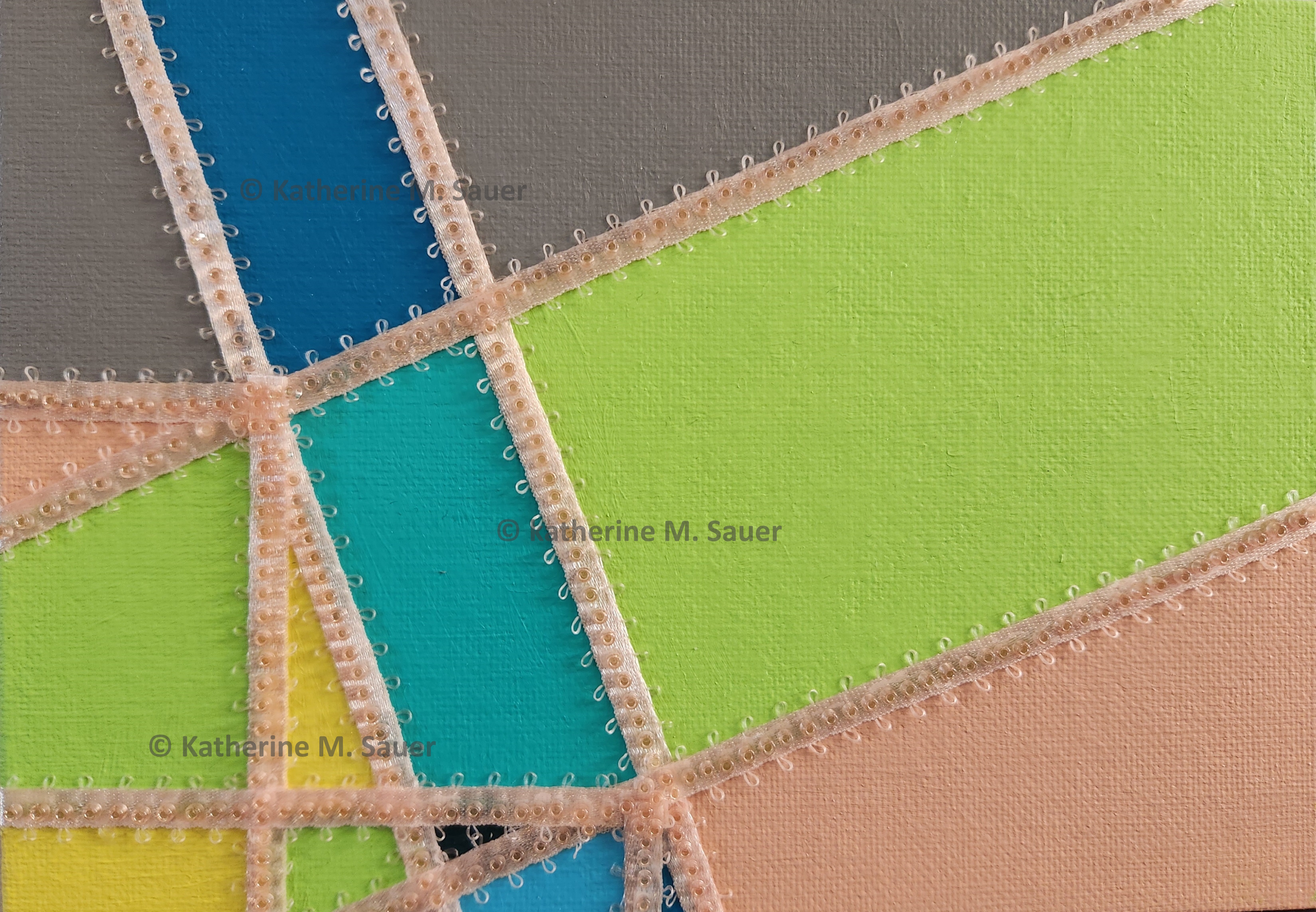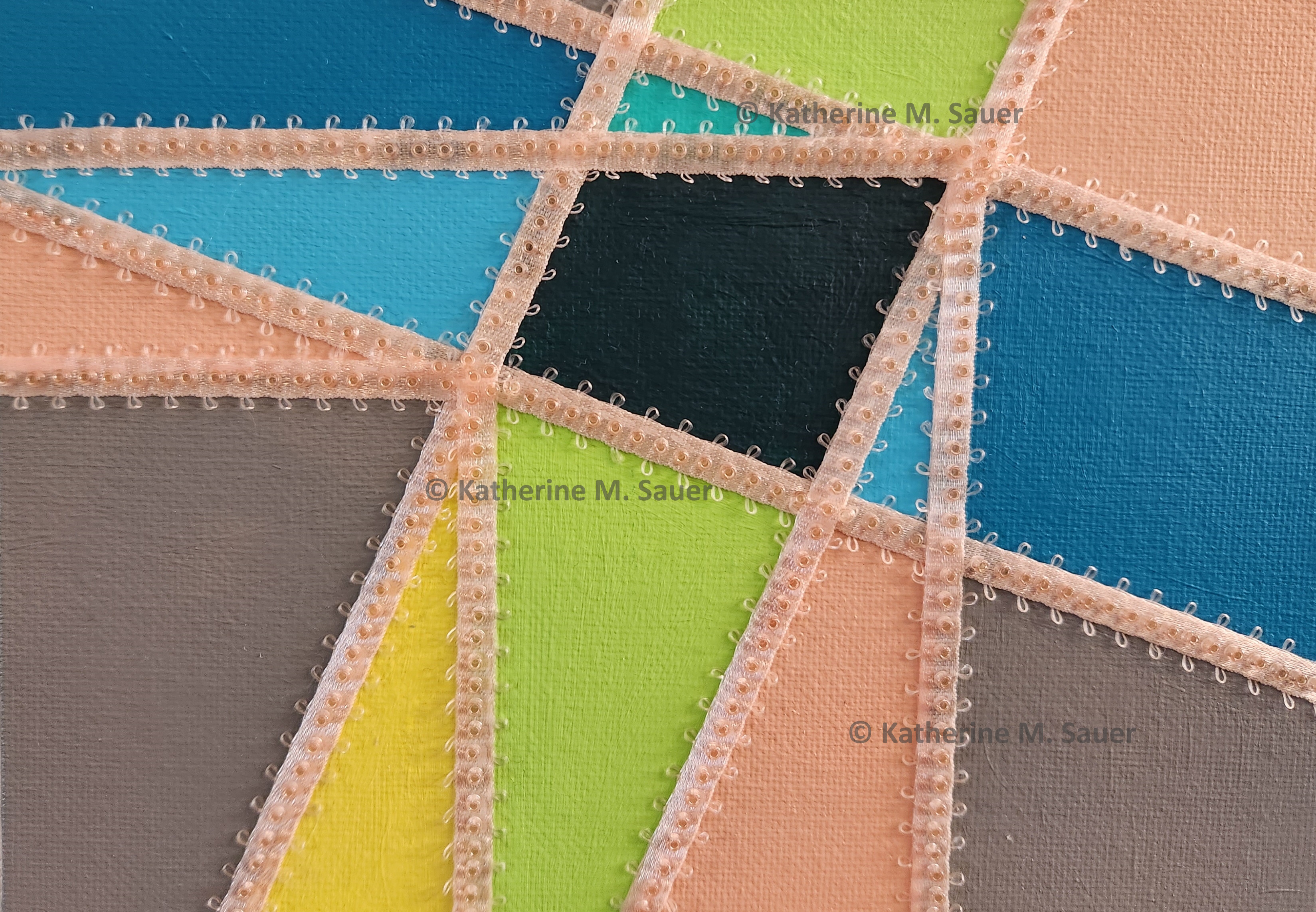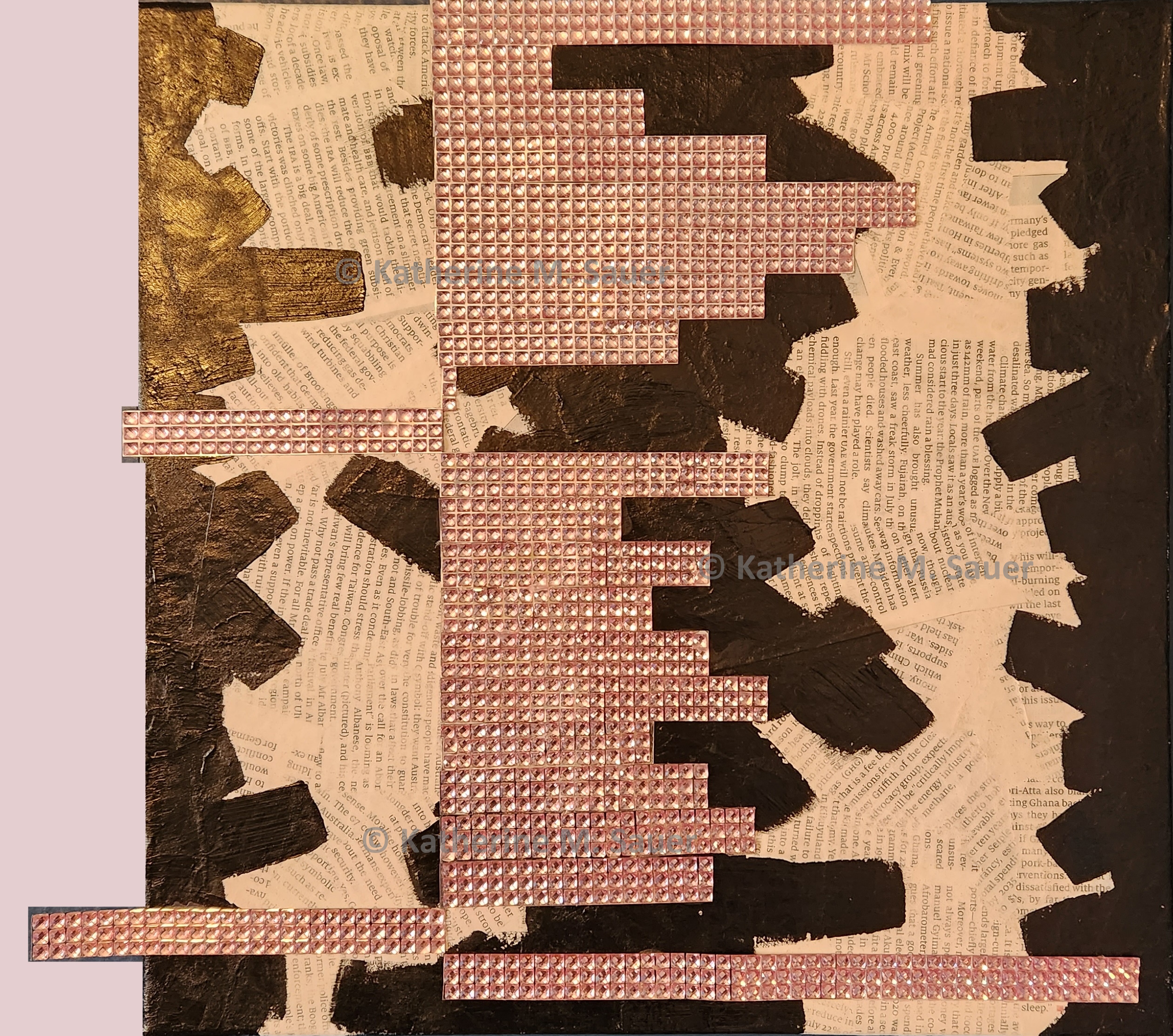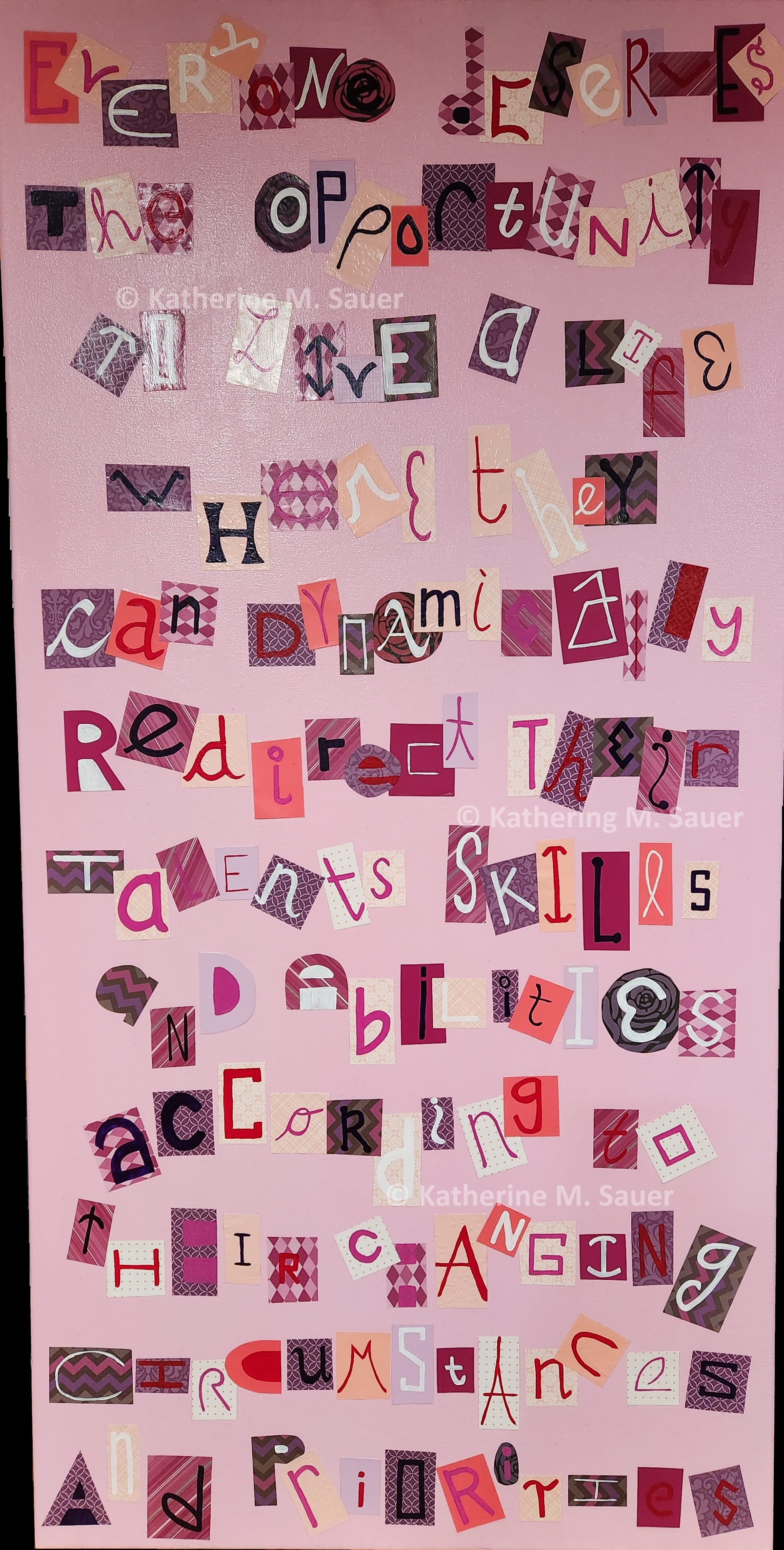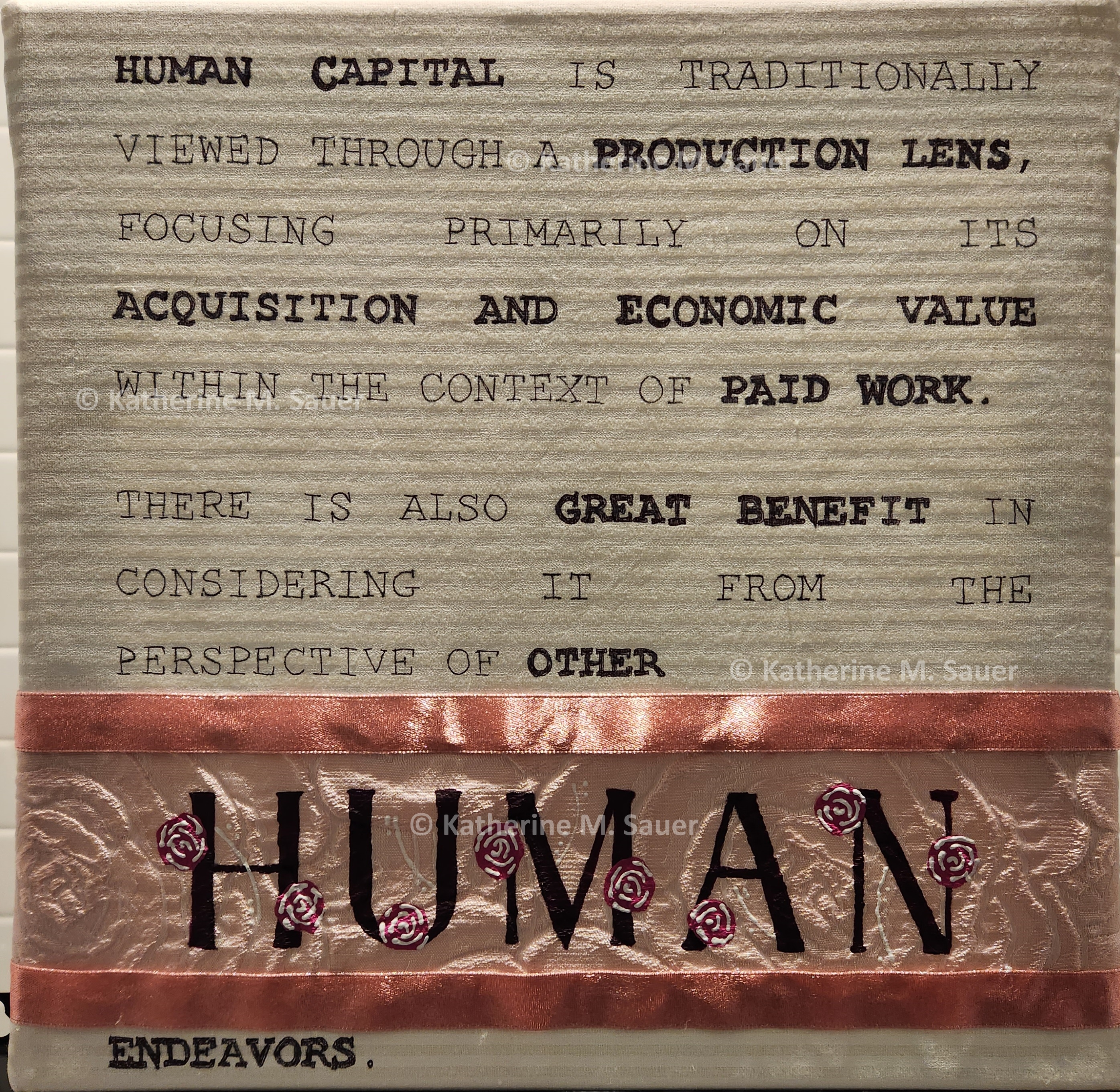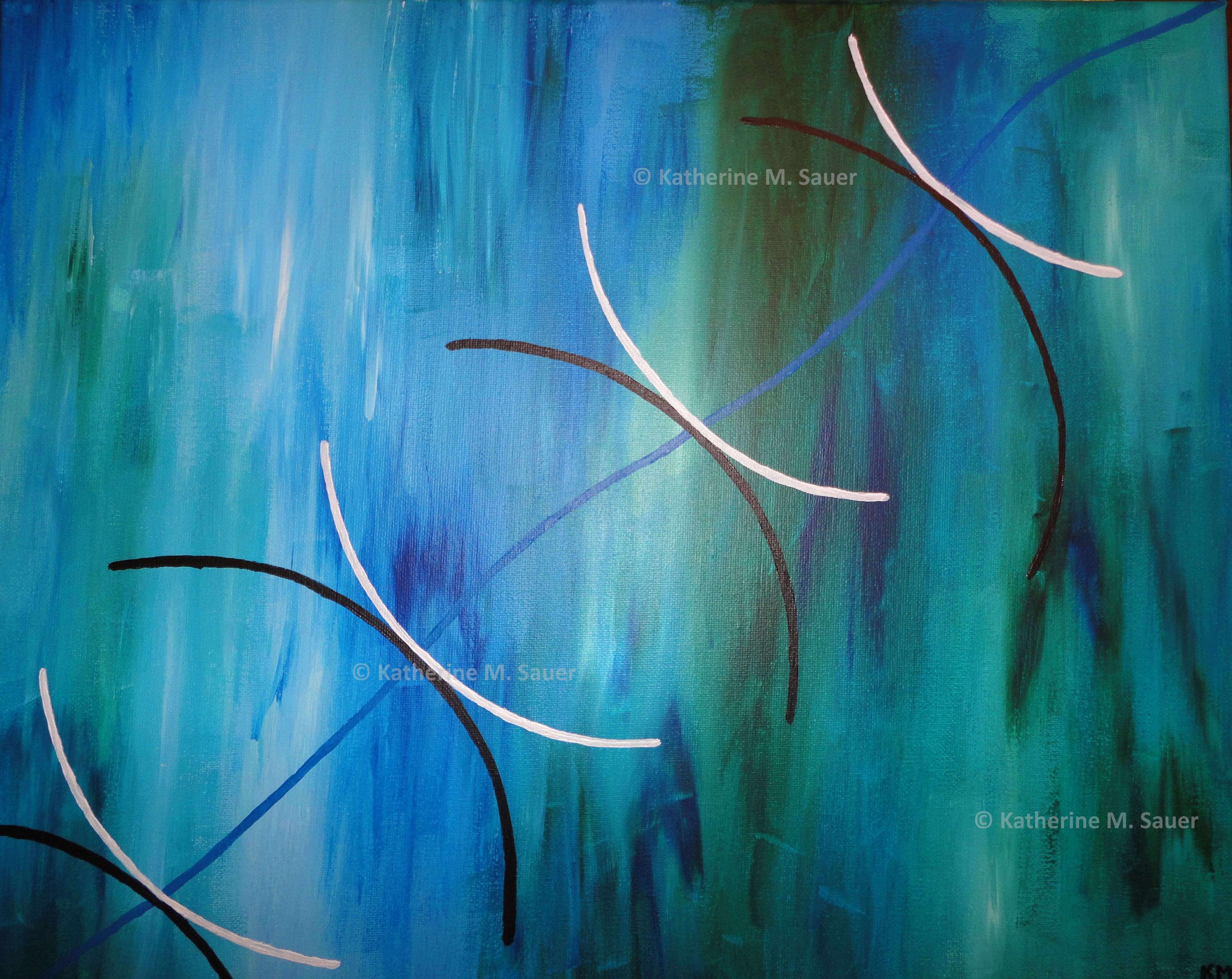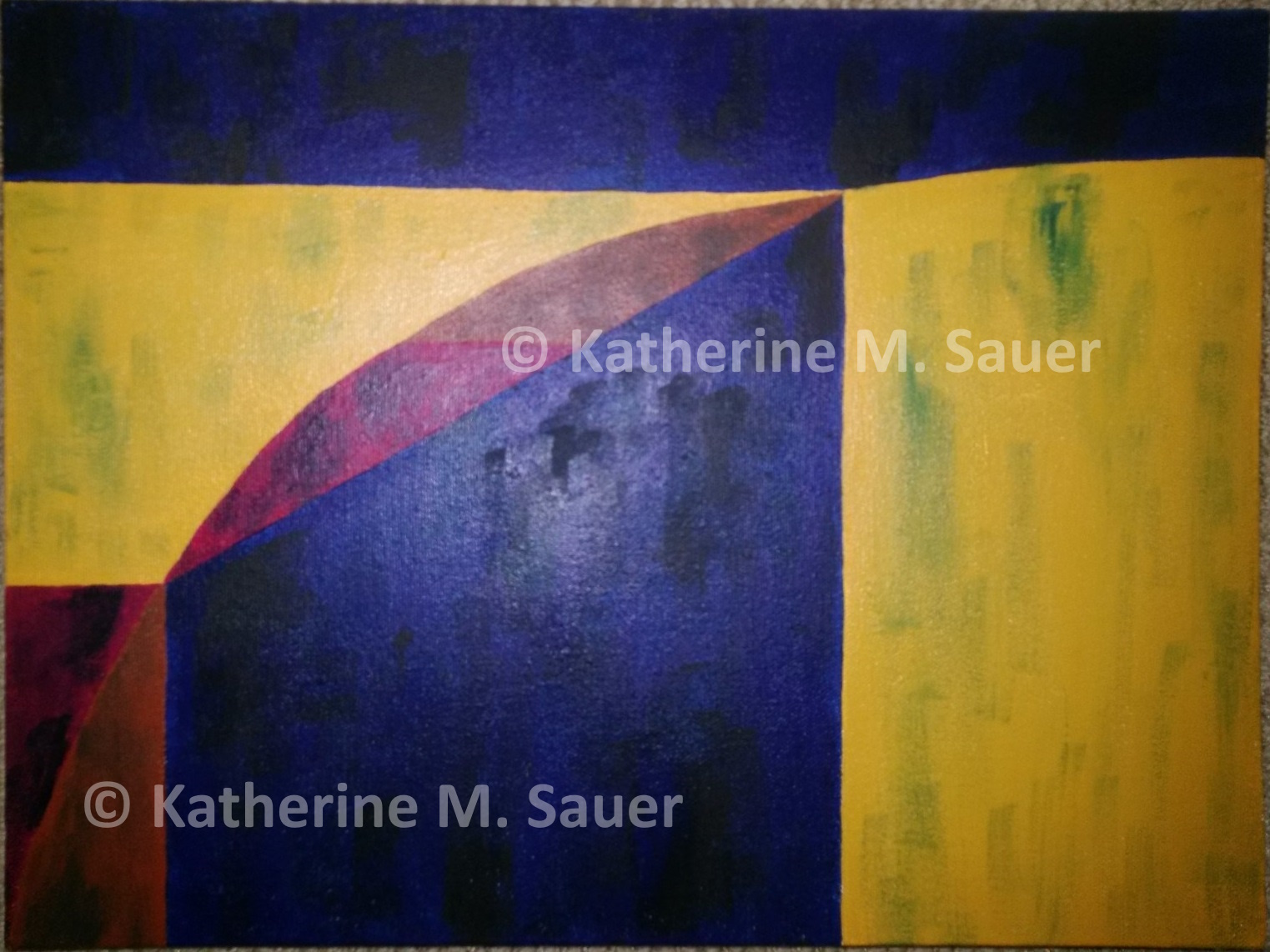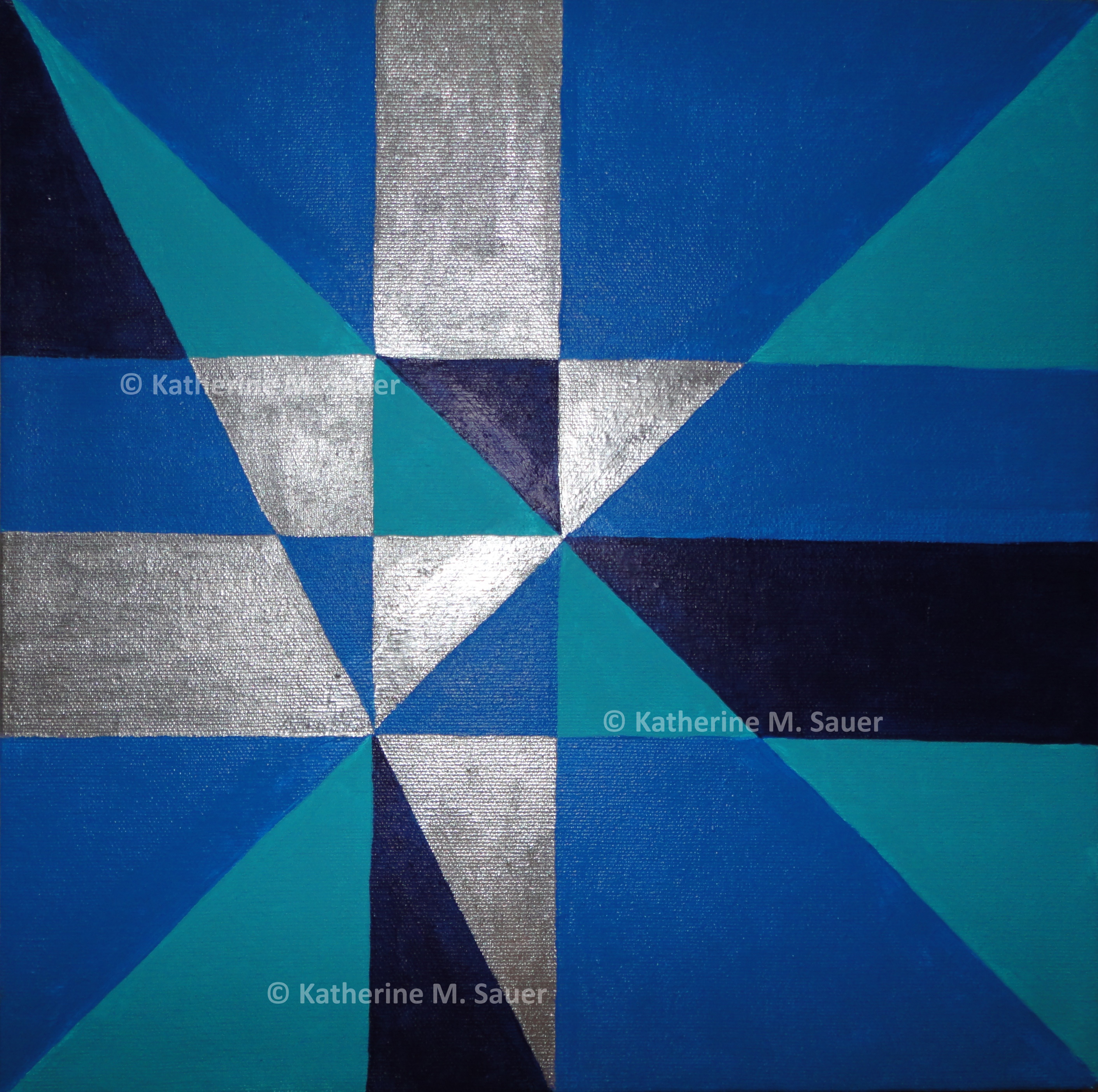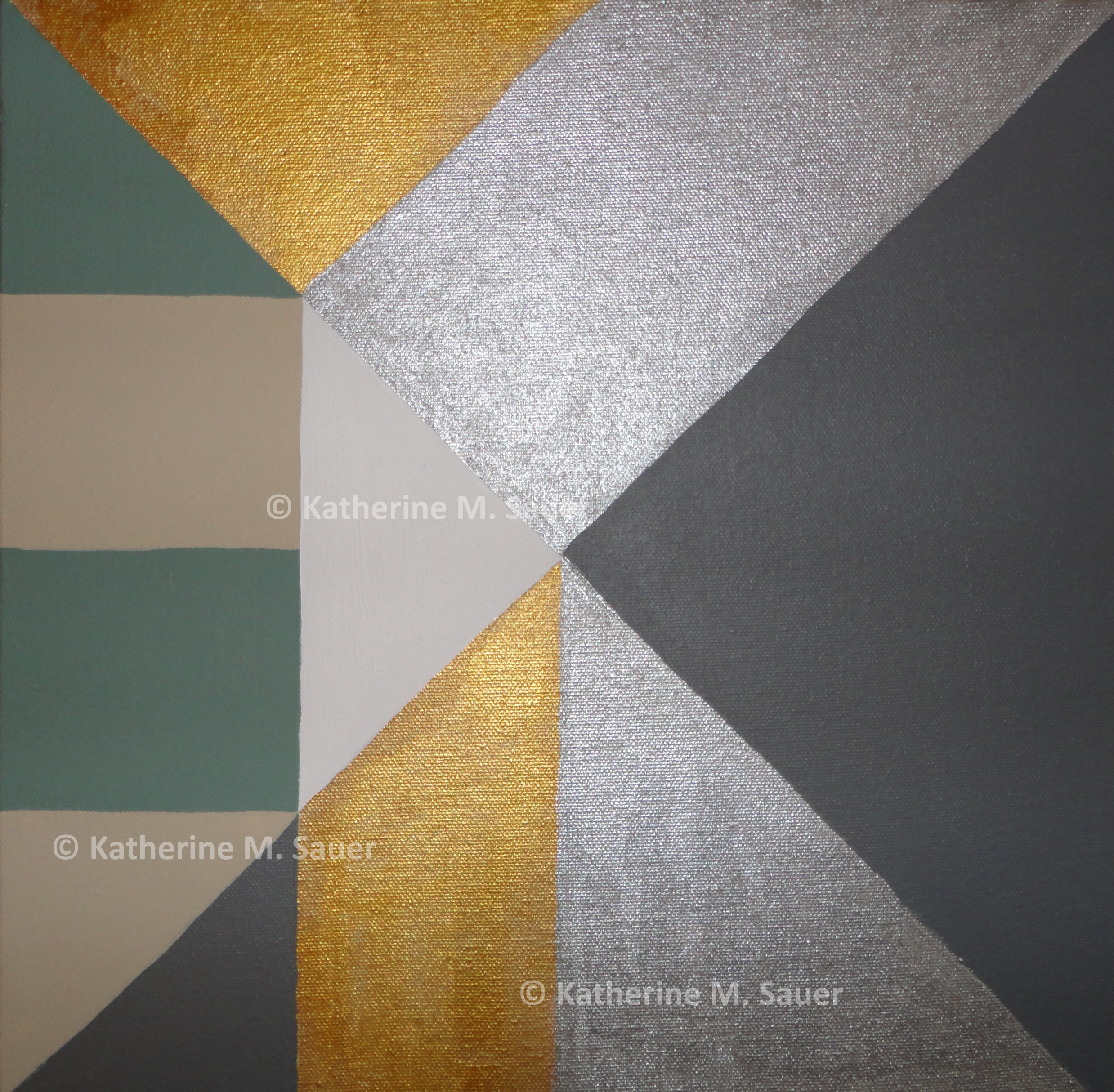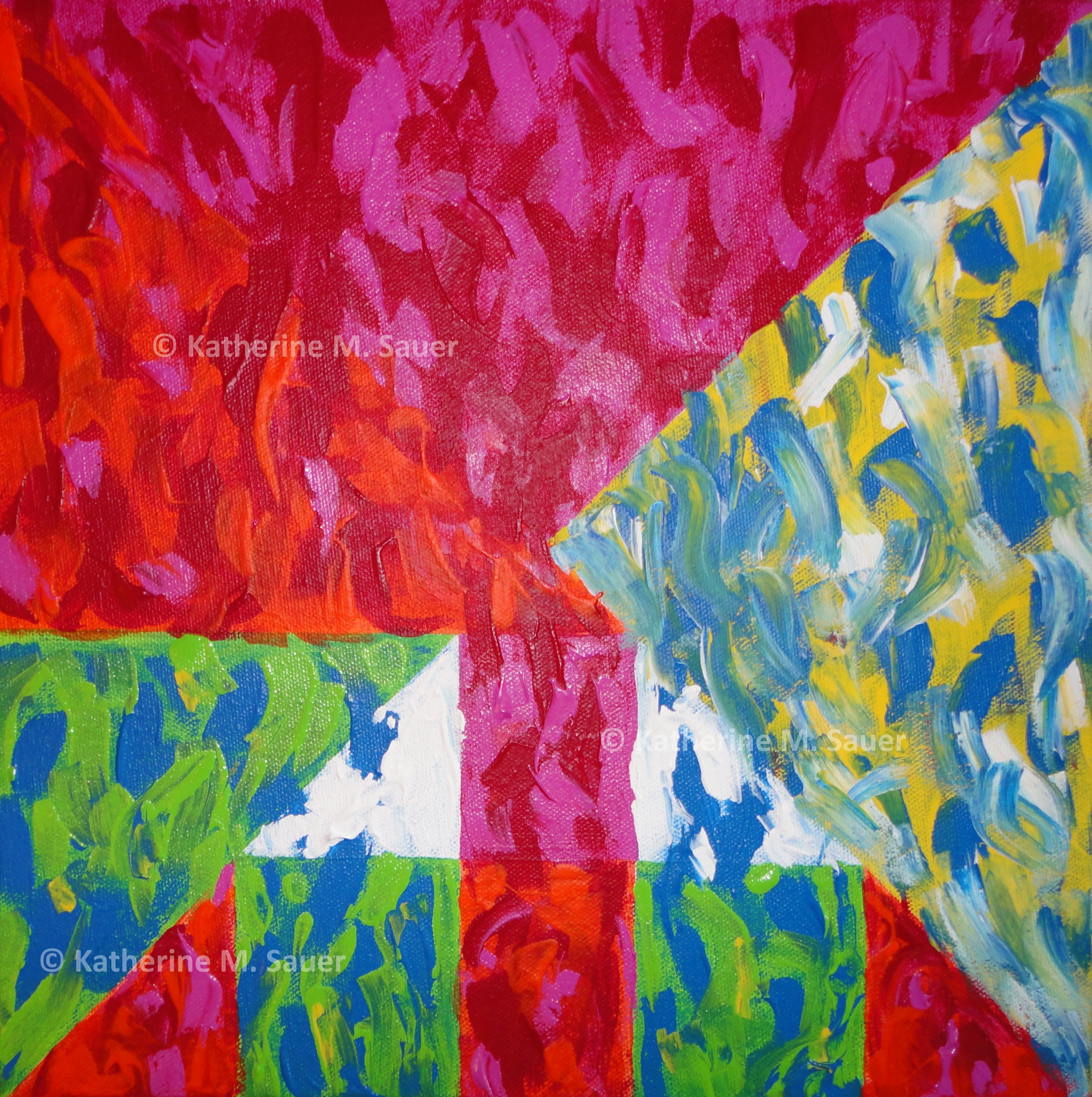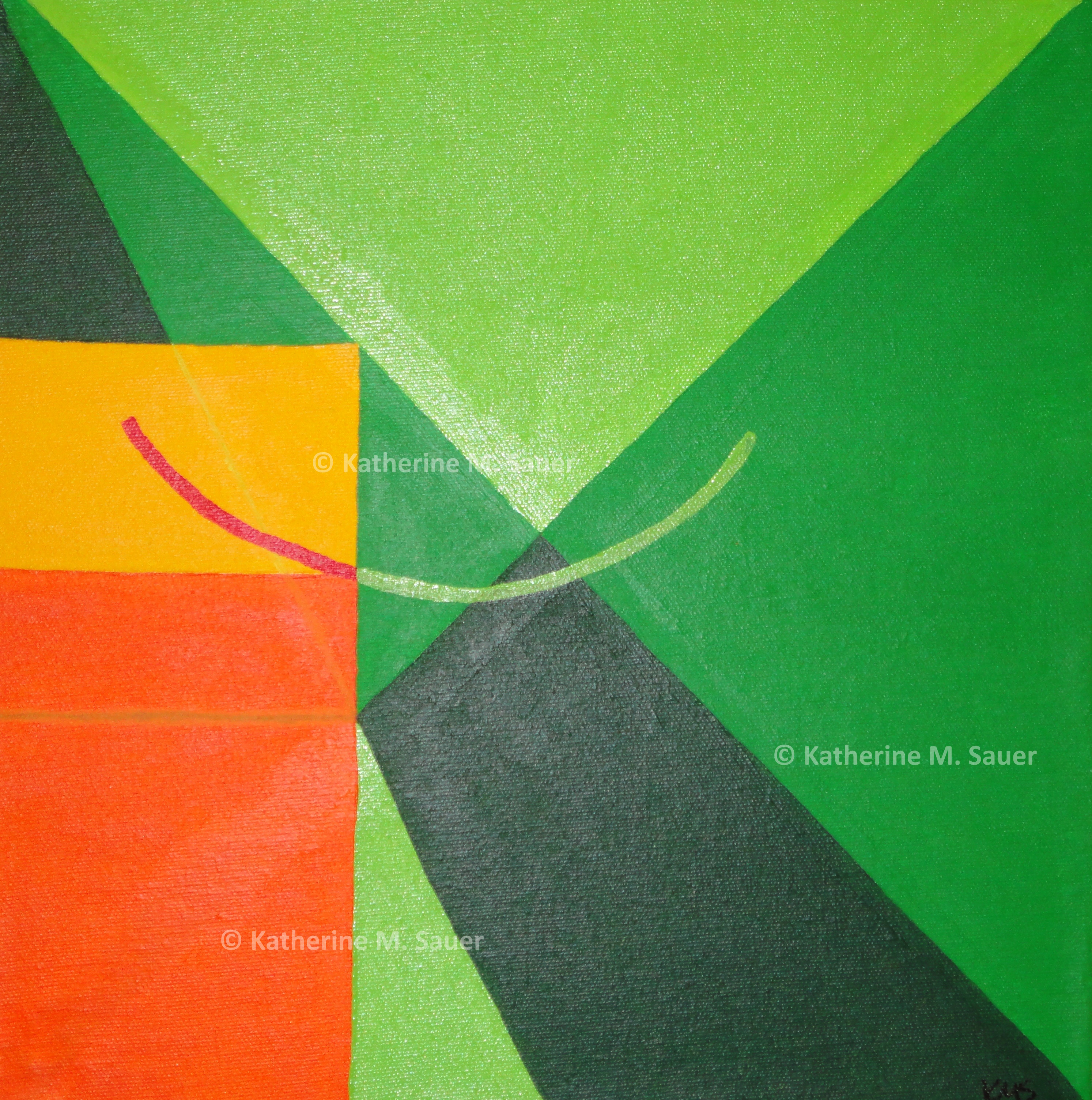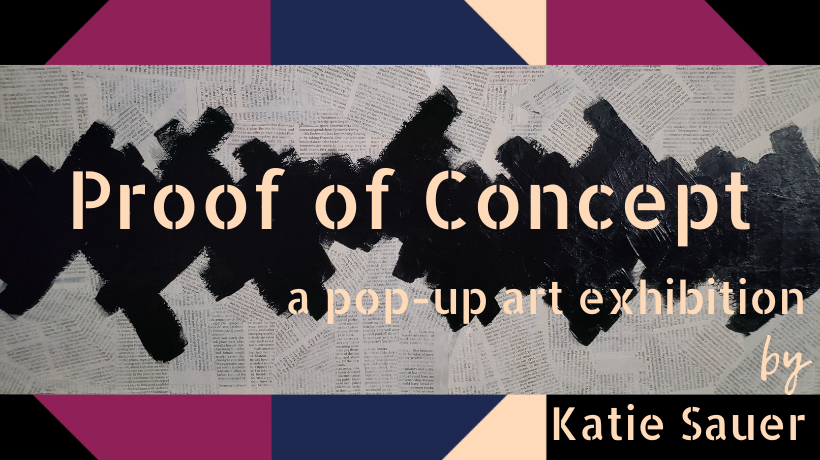
Proof of Concept, Katherine Sauer's debut show, was held in Broomfield, Colorado on 10.01.2022.
The pop-up exhibition was comprised of thirteen new pieces and six older works in the theme of fundamental concepts from the economics discipline. Early works focus on the beauty inherent in economics graphs while recent works juxtapose traditional economics with “feminine” treatments such as colors, ruffles, and home crafts.
The new pieces are divided into five mini-studies of two or three works each. A study is a collection of pieces where the artist explores a technique, material, subject, etc., sometimes in preparation for creating a single piece and sometimes becoming a series themselves.
